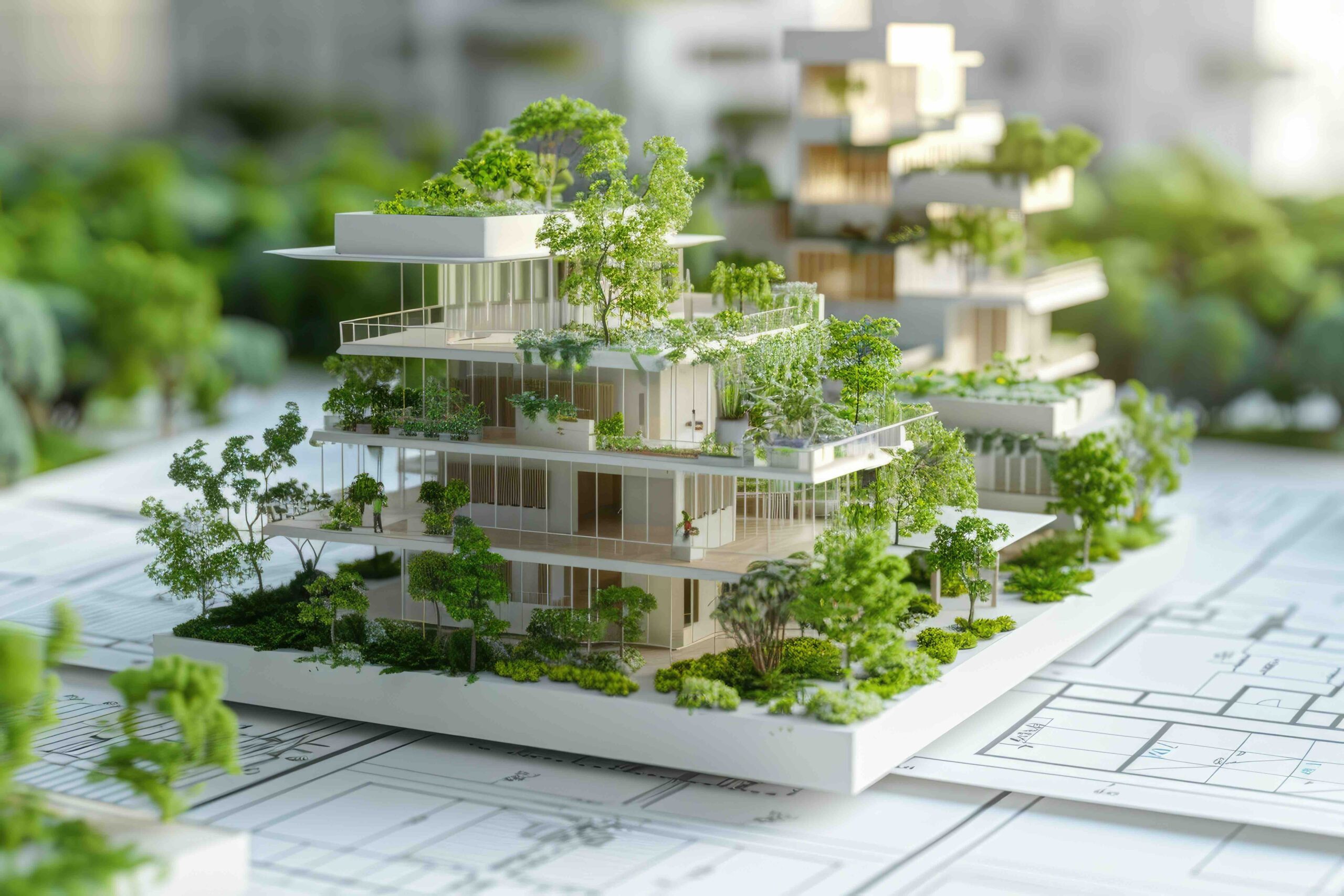The Future of Sustainable Property Development.

As the world grapples with the pressing challenges of climate change, resource depletion, and urbanization, the real estate sector is undergoing a significant transformation. Sustainable property development is no longer just a trend; it’s becoming a fundamental aspect of how buildings are designed, constructed, and maintained. As we look to the future, several key trends and innovations are poised to shape the landscape of sustainable property development.
- The Rise of Net-Zero Energy Buildings
Net-zero energy buildings (NZEBs) are structures that generate as much energy as they consume over the course of a year, often through renewable energy sources like solar or wind. These buildings are designed with energy efficiency in mind, incorporating advanced insulation, energy-efficient windows, and smart building systems to minimize energy use.
As the cost of renewable energy technologies continues to decrease, NZEBs are expected to become more common, particularly in new developments. Governments and municipalities are also setting ambitious targets for carbon neutrality, further driving the demand for net-zero buildings.
- Green Building Certifications and Standards
Green building certifications, such as LEED (Leadership in Energy and Environmental Design), BREEAM (Building Research Establishment Environmental Assessment Method), and WELL, have become benchmarks for sustainable construction. These certifications set high standards for energy efficiency, water conservation, indoor air quality, and the use of sustainable materials.
In the future, we can expect these certifications to evolve and become more stringent, reflecting the latest environmental standards and technological advancements. Developers who achieve these certifications not only contribute to environmental sustainability but also enjoy a competitive advantage in the marketplace, as more consumers and businesses seek out green properties.
- Smart Technologies and the Internet of Things (IoT)
Smart technologies and the Internet of Things (IoT) are playing a crucial role in advancing sustainable property development. IoT-enabled buildings use sensors and automation to monitor and manage energy usage, water consumption, and indoor environmental quality in real time.
For example, smart thermostats can adjust heating and cooling based on occupancy, while intelligent lighting systems can optimize energy use by adjusting to natural light levels. These technologies not only reduce the environmental impact of buildings but also lower operating costs, making them attractive to both developers and occupants.
- Sustainable Materials and Circular Economy
The choice of building materials has a significant impact on the sustainability of a property. In the future, we will see a shift towards the use of sustainable materials that have lower environmental footprints. This includes materials that are recycled, reclaimed, or sourced from renewable resources, such as bamboo, reclaimed wood, and recycled steel.
Moreover, the concept of the circular economy, which aims to minimize waste and make the most of resources, is gaining traction in the construction industry. Buildings designed with a circular economy in mind are built for disassembly, meaning materials can be reused or recycled at the end of the building’s life cycle. This approach not only reduces waste but also promotes resource efficiency.
- Urban Greening and Biodiversity
As urban areas continue to expand, the integration of green spaces and biodiversity into property developments is becoming increasingly important. Green roofs, vertical gardens, and urban forests are examples of how nature is being incorporated into the built environment. These features not only enhance the aesthetic appeal of properties but also provide environmental benefits, such as improved air quality, reduced urban heat island effect, and increased habitat for wildlife.
In the future, we can expect to see more developments that prioritize biodiversity and green infrastructure, creating healthier and more resilient urban environments.
- Water Conservation and Management
Water scarcity is a growing concern in many parts of the world, and sustainable property development is increasingly focused on water conservation and management. This includes the use of water-efficient fixtures, rainwater harvesting systems, and greywater recycling.
Future developments may also incorporate advanced water management systems that monitor and optimize water use, reduce runoff, and enhance water quality. In regions prone to drought or flooding, resilient water management strategies will be essential for sustainable development.
- The Role of Policy and Regulation
Government policies and regulations will continue to play a significant role in shaping the future of sustainable property development. As countries commit to reducing carbon emissions and meeting international climate targets, stricter regulations on energy efficiency, emissions, and sustainable practices in construction are likely to emerge.
Incentives such as tax breaks, grants, and subsidies for sustainable developments will also encourage developers to adopt green practices. Developers who stay ahead of regulatory trends and invest in sustainable practices will be better positioned to meet future requirements and capitalize on emerging opportunities.
- Social Sustainability and Community Engagement
Sustainability in property development is not just about environmental impact; it also encompasses social sustainability. This involves creating developments that are inclusive, accessible, and beneficial to the local community.
In the future, we can expect a greater focus on community engagement in the development process, ensuring that projects meet the needs of local residents and contribute to social equity. Mixed-use developments that integrate residential, commercial, and recreational spaces will become more common, fostering vibrant, diverse communities.
Conclusion
The future of sustainable property development is bright, driven by technological innovation, evolving standards, and a growing awareness of the need to protect our planet. As developers, investors, and consumers increasingly prioritize sustainability, the real estate industry will continue to evolve, creating buildings and communities that are not only environmentally responsible but also economically viable and socially inclusive.
By embracing these trends and staying ahead of the curve, developers can contribute to a more sustainable future while also reaping the benefits of being leaders in the industry. The journey towards sustainability is ongoing, and those who invest in it today will shape the world of tomorrow.

